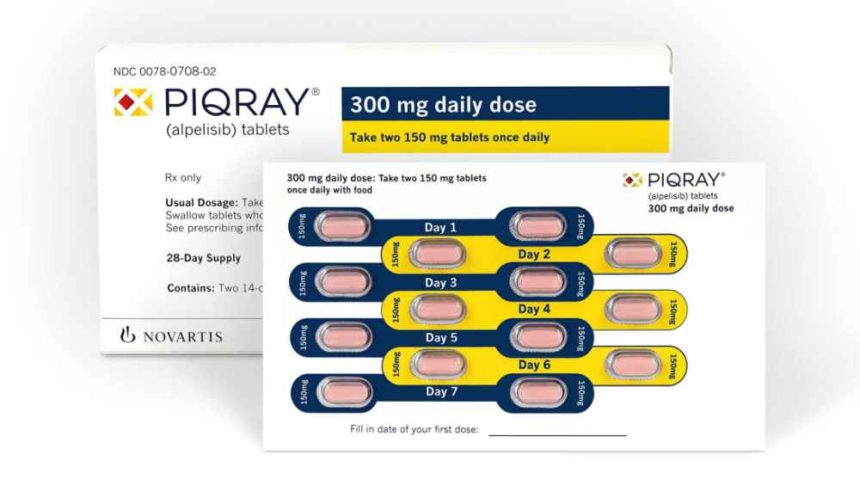Piqray (Alpelisib),The First PI3K inhibitor Approved By US FDA For Breast Cancer
Source: US FDA May 29, 2019 5 years, 10 months, 4 weeks, 7 hours, 33 minutes ago
The U.S. FDA has approved Piqray (alpelisib) tablets, to be used in combination with the approved endocrine therapy fulvestrant, to treat postmenopausal women, and men, with hormone receptor (HR)-positive, human epidermal growth factor receptor 2 (HER2)-negative, PIK3CA-mutated, advanced or metastatic breast cancer (only as detected by an FDA-approved test) following progression on or after an endocrine-based regimen.

The FDA also approved the accompanying diagnostic test, therascreen PIK3CA RGQ PCR Kit, to detect the mutation in a tissue or in liquid biopsy. Patients who are negative by the therascreen test using the liquid biopsy still should undergo tumor biopsy for PIK3CA mutation testing as a safeguard.
Metastatic breast cancer is breast cancer that has spread beyond the breast to other organs in the body (ie the bones, lungs, liver or brain). When breast cancer is hormone-receptor positive, patients may be treated with anti-hormonal treatment (also called endocrine therapy), alone or in combination with other medicines, or chemotherapy.
Piqray is the first PI3K inhibitor to demonstrate a clinical benefits in treating patients with this particular type of breast cancer. The ability to target treatment to a patient’s specific genetic mutation or biomarker is becoming increasingly common in cancer treatment, and companion diagnostic tests assist oncologists in selecting patients who may benefit from these targeted treatments.
The effectiveness of Piqray was studied in the SOLAR-1 trial, a randomized trial of 572 men and postmenopausal women with HR-positive, HER2-negative, advanced or metastatic breast cancer whose cancer had progressed while on or after receiving an aromatase inhibitor. Results from the trial showed the addition of Piqray to fulvestrant significantly prolonged progression- free survival (median of 11 months vs. 5.7 months) in patients whose tumors had a PIK3CA mutation.
Common side effects of Piqray are elevated blood sugar levels, creatinine level elevation, diarrhea, rash, decrease in lymphocyte count, elevated liver enzymes, nausea, fatigue, low red blood cell count, increase in lipase, decreased appetite, stomatitis, vomiting, weight loss, low calcium levels, aPTT prolonged (blood clotting taking longer to occur than it should), and significant hair loss.
Oncologists are advised to monitor patients taking Piqray for severe hypersensitivity reactions or intolerance. Patients are warned of potentially severe skin reactions sucah as rashes that may result in peeling and blistering of skin or mucous membranes like the lips and gums. Oncologists are advised not to initiate treatment in patients with a history of severe skin reactions such as Stevens-Johnson Syndrome, erythema multiforme, or toxic epidermal necrolysis. Patients on Piqray have reported severe hyperglycemia, and the safety of Piqray in patients with Type 1 or uncontrolled Type 2 diabetes has not been studied.Before initiating treatment with Piqray, oncologists are advised to check fasting glucose and HbA1c, and to optimize glycemic control. Patients should be monitored for pneumonitis/interstitial lung disease or inflammation of lung tissue,and diarrhea during treatment.
The FDA granted approval of Piqray to Novartis. The FDA granted approval of the therascreen PIK3CA RGQ PCR Kit to QIAGEN Manchester, Ltd.
